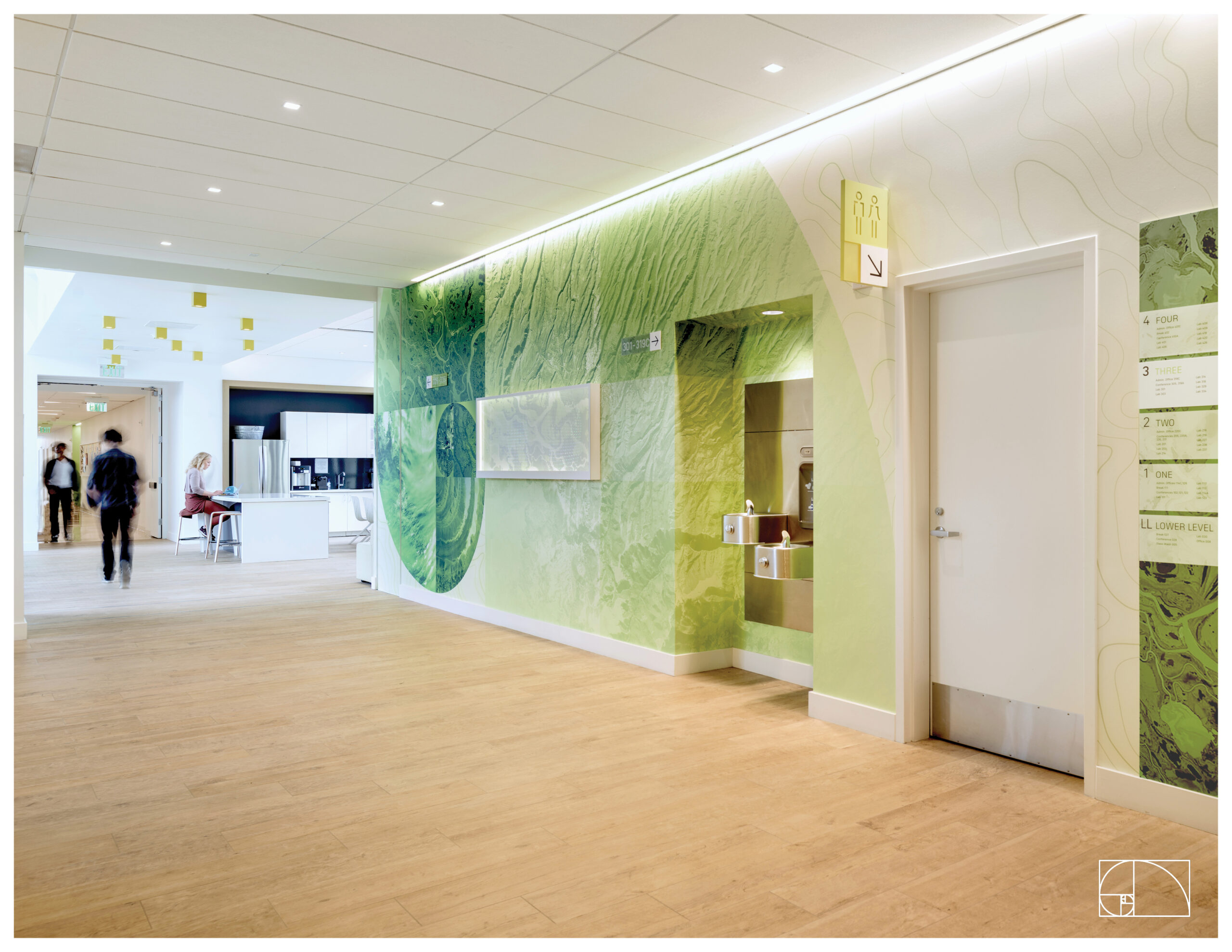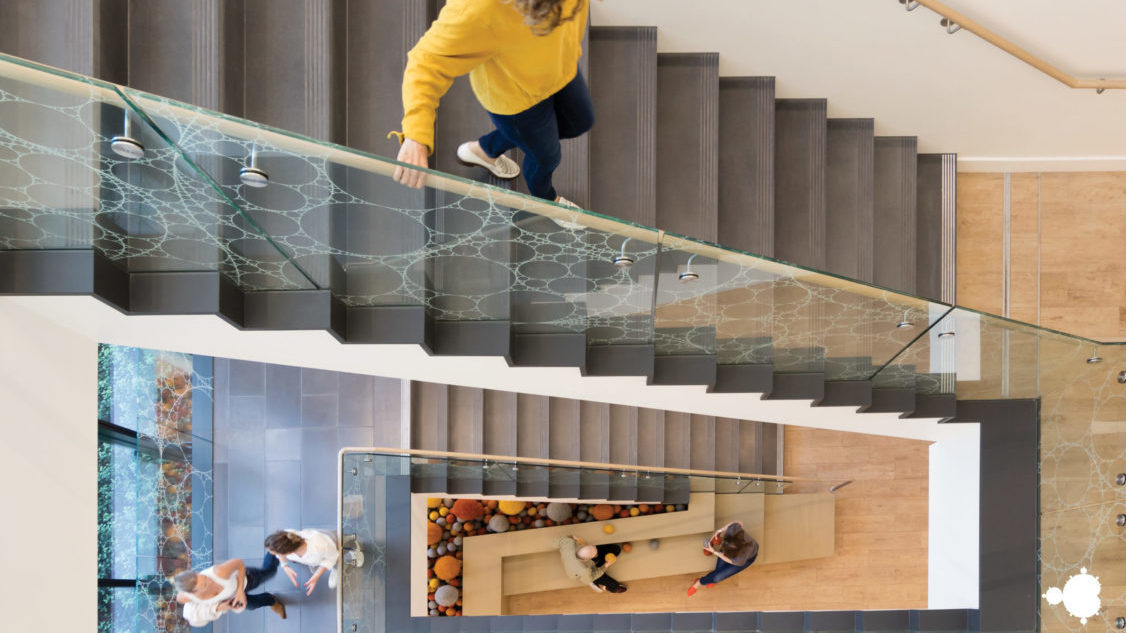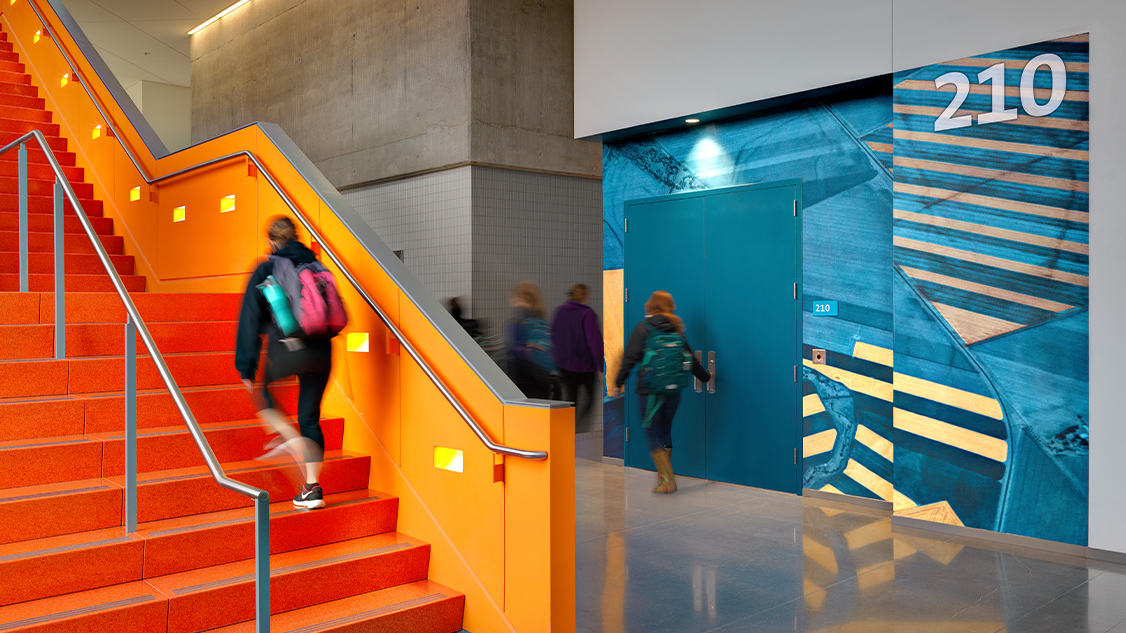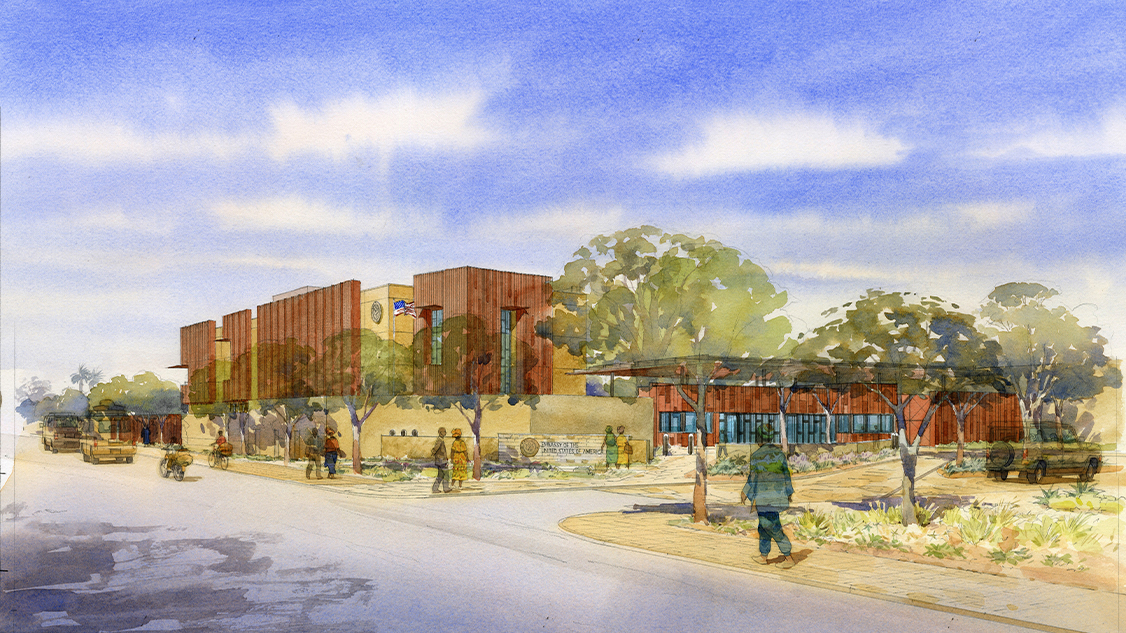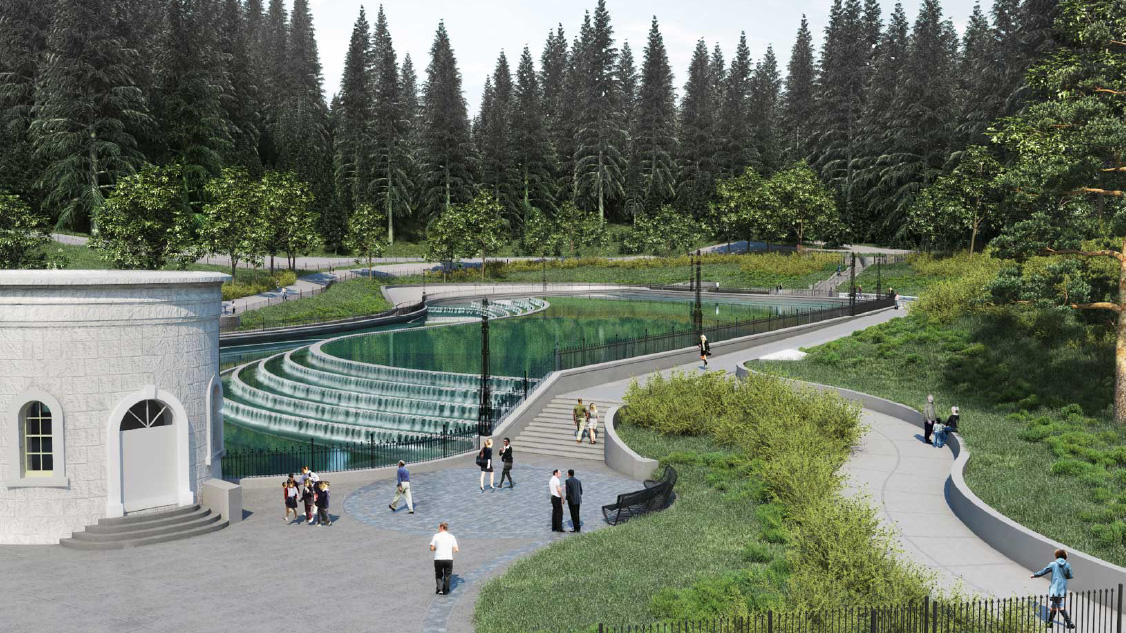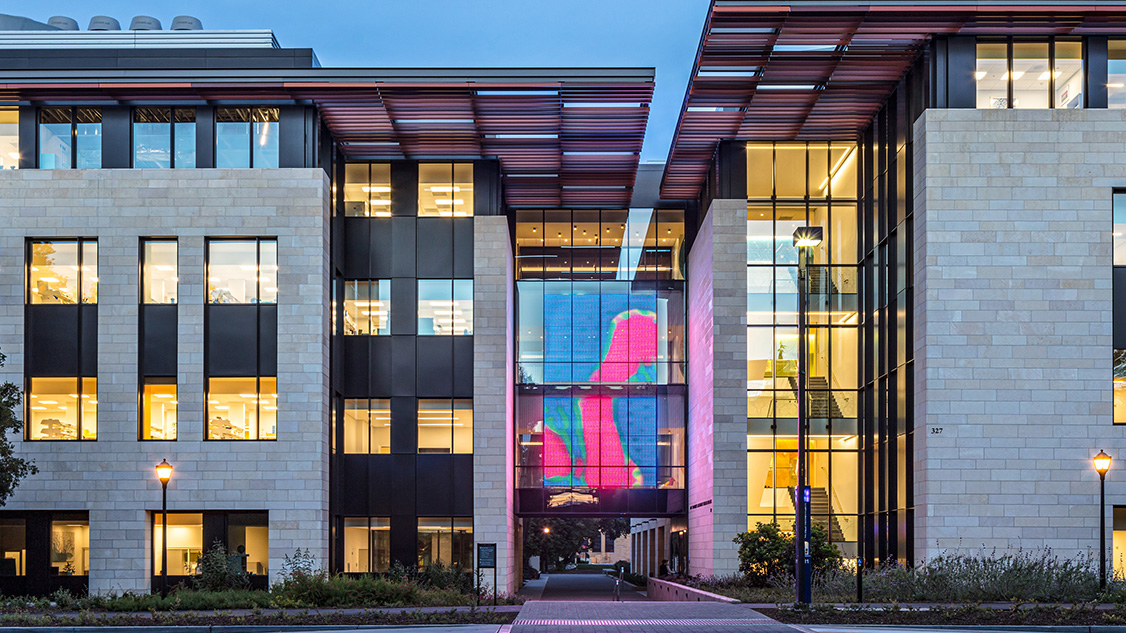
Bass Biology Building encourages a collision of ideas among students and educators from areas as diverse as ecology and evolution to molecular and cellular biology.
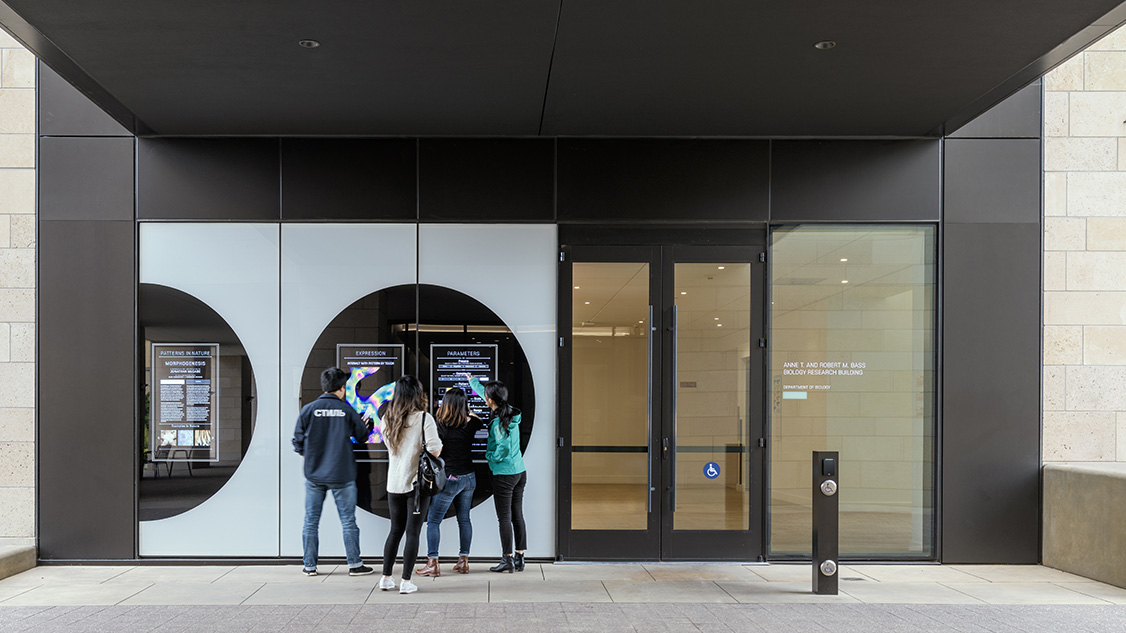
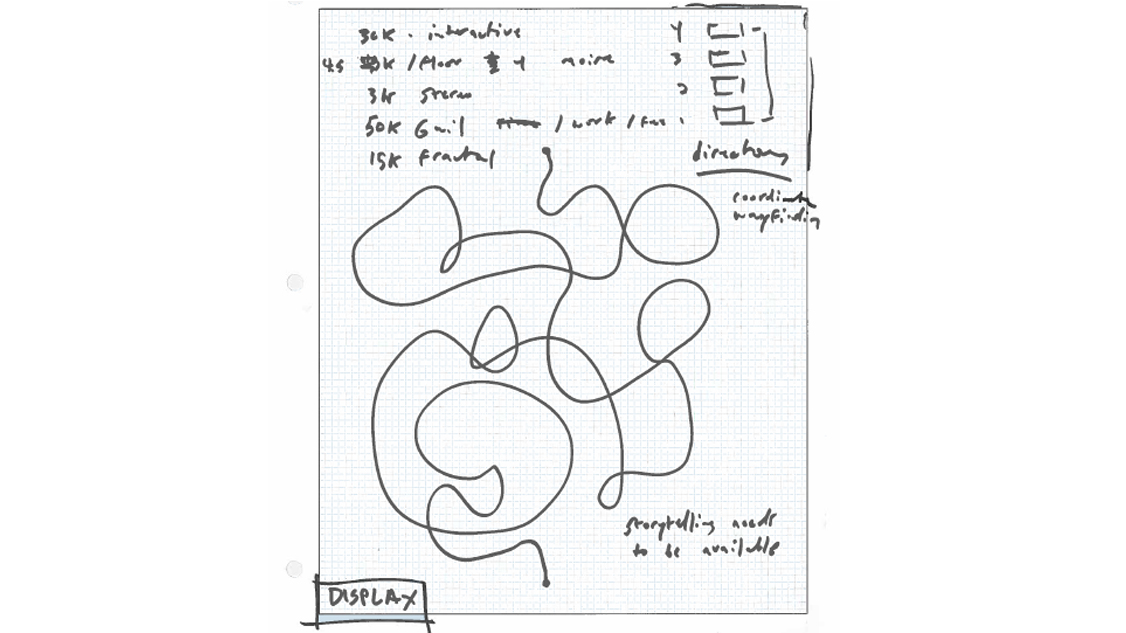
Diagram of Chaos Patterns In Nature
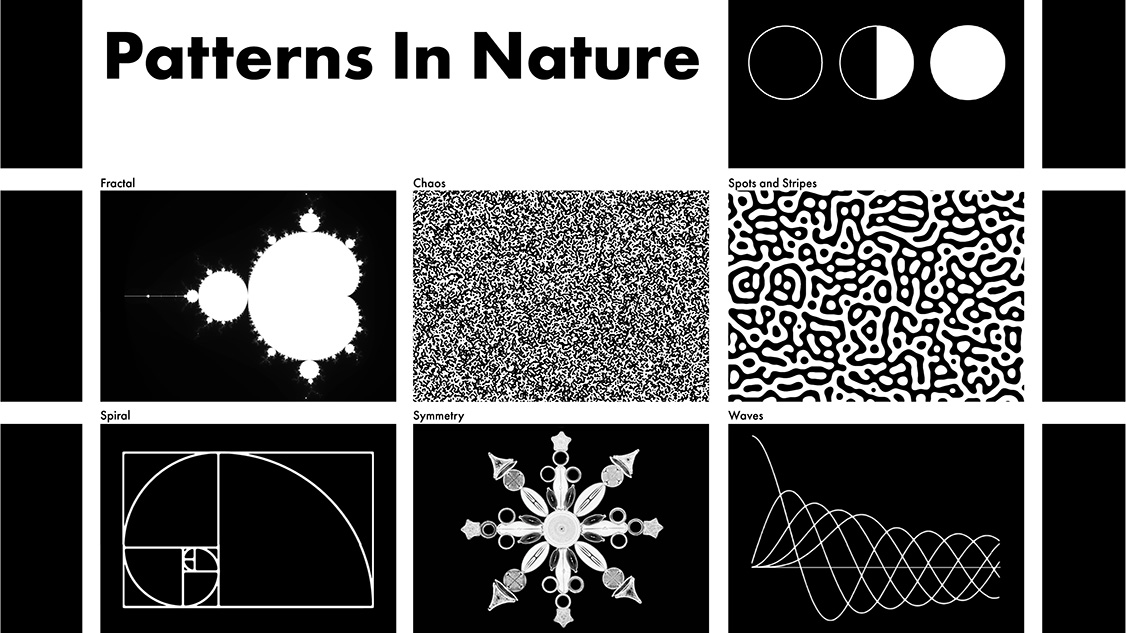
Diagram of Patterns in Nature
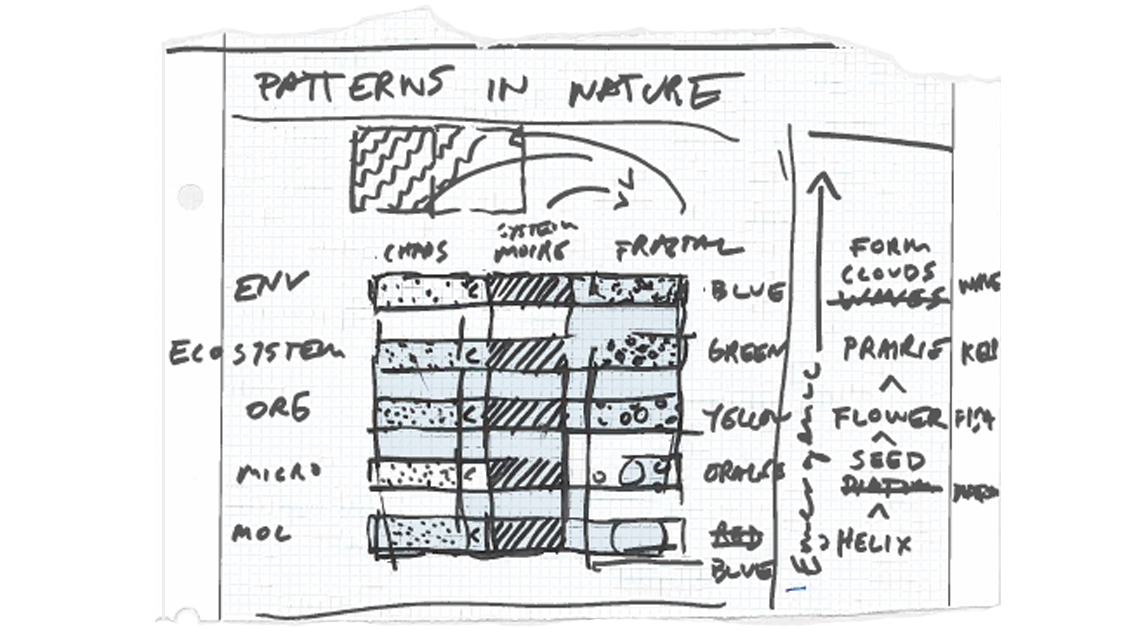
Sketch for Emergence of Complexity Concept
A new hypothesis for design and collaboration is unfolding at Stanford University’s Anne T. and Robert M. Bass Biology Research Building. Knot Studio’s contribution to the Bass Biology demonstrates our designers’ openness and dedication to the evolution of design in wayfinding and storytelling.
Knot Studio’s innovative contributions to the Bass Biology Research Building are fostering the next evolution in the quest to improve the human condition through integrating the disciplines of life sciences. The Bass Biology Research Building allows biology faculty and students — who once were dispersed around Stanford’s campus — to work and socialize in a shared environment designed to foster breakthroughs and new ways of thinking about the life sciences. The building encourages a collision of ideas among students and educators from areas as diverse as ecology and evolution to molecular and cellular biology and promotes new channels for scientific discovery.
Knot Studio designers, working with a wide range of stakeholder groups, were integral to creating a one-of-a-kind interactive art piece installed over the entrance to the Bass Biology Research Building. Titled “Morphogenesis,” the 32-foot tall installation displays digital media controlled by a touch screen panel that showcases interactive art and biological patterns and allows users to experience a magical connection with the structure. Symbolic of the work inside the Bass Biology Research Building, Morphogenesis is an ever-evolving, co-mingling of ideas and scientific inspiration. Knot Studio’s team collaborated on developing code language to create the graphics displayed on Morphogenesis.
With the realization and completion of the Bass Biology Research Building, new meaningful adjacencies abound; the building is a cornerstone for a new quad that brings disciplines of life sciences close to the university’s School of Medicine, as well as other Stanford departments such as computer science, statistics, and engineering.
Knot Studio’s close collaboration with a wide range of stakeholder groups was essential to the successful design expressed in the Anne T. and Robert M. Bass Biology Research Building. Tasked with telling stories of science in a non-literal, abstract way, Knot’s design team was given broad artistic license to explore multiple themes and variations. A design-build project, the Bass Biology Research Building, required partnerships with contractors to explore many challenges behind the installation of Morphogenesis and other essential artwork and wayfinding in the building. Stanford’s highly secure network required complex planning with subcontractors to bring Morphogenesis to life.
The building blocks for Knot Studio’s design originated with our team’s thorough understanding of the building’s design’s organizing framework and architectural elements. Knot Studio left no stone unturned in this unique collaboration, from researching molecular imagery to diving into multi-cellular organisms. Stanford’s support and enthusiasm for generating ground-breaking design gave the team freedom to explore themes such as “Patterns in Nature,” which became the cornerstone for Knot Studio’s design solutions. Multiple workshops and a collaborative, integrated approach to finding solutions yielded a graphics program for Bass Biology Research Building that creates identity and context to empower all who learn and work in this unique structure.
